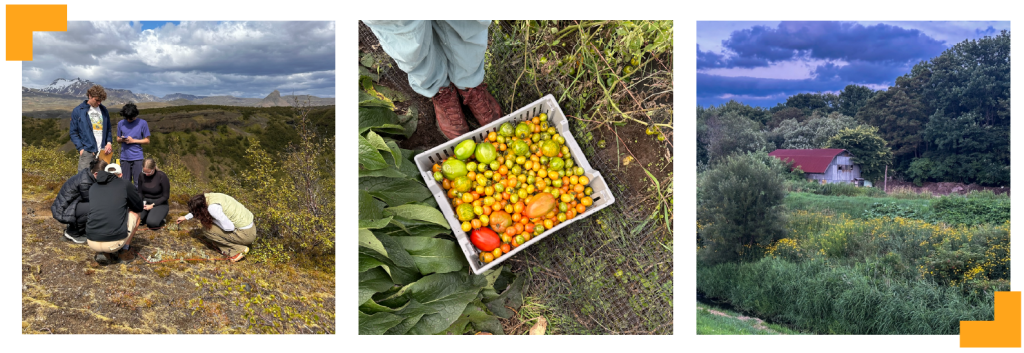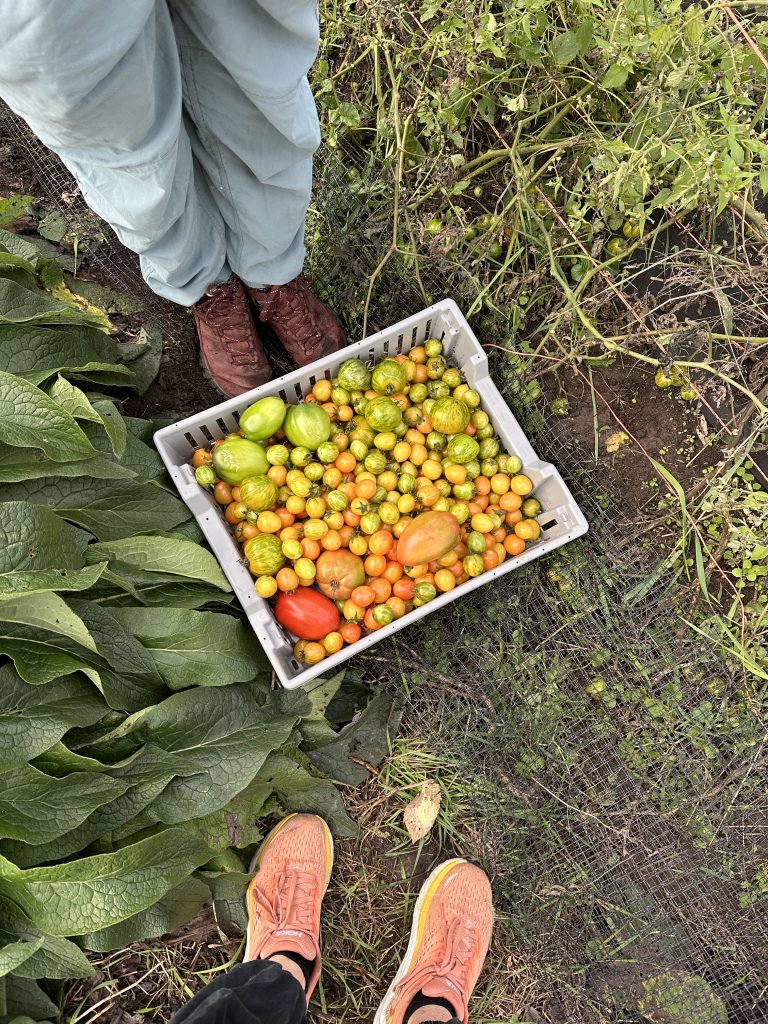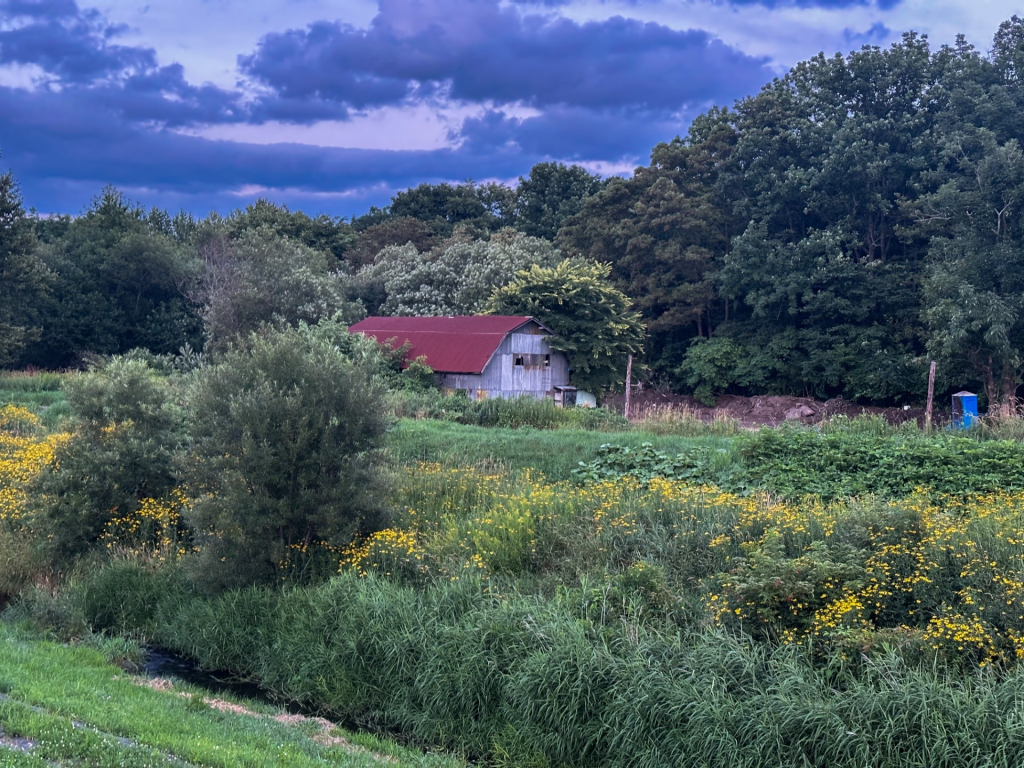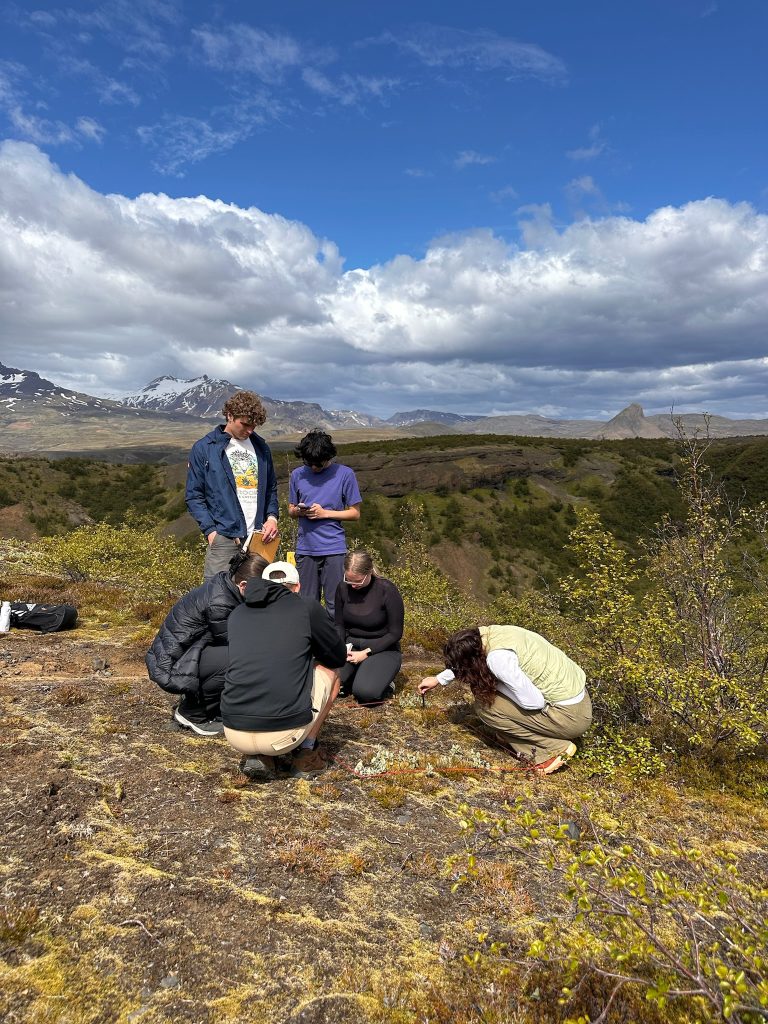
With five study abroad programs complete, Taigan Anderson is making the most of her first two years at UW-Madison. She has traveled to Vienna, Austria; Angers, France; across Iceland; and Obihiro, Japan to study global health, food systems, and agriculture. She’s majoring in agroecology and life science communications with certificates in global health and geospatial data science. Anderson is one of the first students in the new agroecology undergraduate program. She hopes to use her knowledge in agroecology to connect with fresh produce such as working at a farm-to-table restaurant.
What made you interested in studying agroecology?

I became interested in Agroecology because the major provides an outlet for the future I hope to curate. This future is focused on equitable food systems that support local farmers and adapt to climate change. The combination of agriculture and ecology was perfect for me, as a person who adores culinary arts and understanding cultural impact. I enjoyed how passionate the professors were about the subject and how light-heartedly approached course topics were. This brand-new degree gave me the opportunity to find fulfillment in giving back to my community ensuring that everyone has access to affordable and nutritious food. Agroecology taught me that fostering community from the backbone of agriculture provides a waterfall effect of benefits.
What is the most interesting class you’ve taken so far?
Agroecology 103 was the primary class in my freshman year of college that truly changed how I viewed the world. Growing up in a farming family, agriculture always felt self-explanatory. However, the class challenged agricultural myths and ideals, humanized people globally, and explained the roots of hardship in extracted countries. It showed how tilling harms soil health and carbon storage. More importantly, it revealed how social norms shape farming. Farmers are pushed to maximize crop yields and often incur debt due to the unattainable pursuit of economic growth. When solutions arise, many are hesitant to employ them because they do not want to break social norms. I realized that even familiar methods may not be sustainable or financially effective.
Did you study food systems while traveling? If so, what are some similarities and differences you noticed compared to our Wisconsin food systems?

I studied food systems in France and Japan and tried to learn about them even if the program was not explicitly about food systems. In Japan, the northern prefecture of Hokkaido is at roughly the same latitude as Wisconsin. This means they experience similar climates and therefore similar growing seasons. However, Japan is surrounded by the ocean and has mountainous regions, which affect the weather differently from Wisconsin. Oceans provide Hokkaido with temperature stabilization by insulating the coast with a heat buffer or heat reservoir. This can be seen during the winter by warming the coast and during the summer by bringing cooler winds. The mountains create “microclimates” which allow crops to be shielded from wind and trap warmth. There is a focus on different crops as well, such as sugar beets and edamame. France had conventional farming equipment like the U.S., but overall had a much more pronounced respect for biodiversity, at least in the farms we interviewed and government initiatives. I also heard farmers speak about debt and the financial strain of continuing farming in a culturally significant way, when their children often want to pursue other careers. Policy and culture can split in two directions: pushing farmers toward biodiversity while the weight of debt keeps them tied to conventional methods.
How did climate and environment (harsh winters/tropics/mountains/wetlands) shape the food systems you visited?
In Japan, the Northern prefecture of Hokkaido is faced with humid and hot summers, and extremely cold and snowy winters. The soil is volcanic and holds a great deal of moisture, but this presents threats to the crops, such as molds and other fungi. Mountains are both useful and harmful to the current food system. For instance, they provide fresh water through melting snow caps but also create elevation changes that make it difficult to plant crops in typical rows using tractors. The current farming methods have adapted to the shorter humidity with the use of pesticides and fungicides.
What was the most interesting food you tried while studying abroad?

The classic fermented shark in Iceland. It was atrocious.
Has agroecology changed your perspective on the world? If so, how?
Agroecology has shaped the way I view the world by highlighting the lottery system that our society unequivocally is. For example, some have access to food from every season from 9:00 a.m.–10:00 p.m. at the grocery store down the street. I learned the complexities surrounding “Food Miles” and how it truly is a miracle to be able to ship food to areas without it. I saw how it is virtually impossible not to be a hypocrite concerning carbon footprint, but that does not mean it is futile to create more sustainable community efforts. The class confirmed my perspective on the vast food waste problem as well. The U.S. produces exorbitant amounts of produce, yet 30–40% is food waste. Rotting, uneaten food is the main contributor of methane, something that can be avoided with minimal effort. Rural towns are in food swamps, with the nearest access to groceries being a Dollar General. Countries that have been continually extracted from are facing the reality of the climate crisis from another country’s greenhouse gases, and are adapting to produce enough calories with innovative techniques. When given the privilege of three meals a day and the opportunity for higher education, it is essential to reduce the fracturing of community agriculture by focusing on sustainable initiatives. We can do this by focusing on access to agroecology education for everyone.
